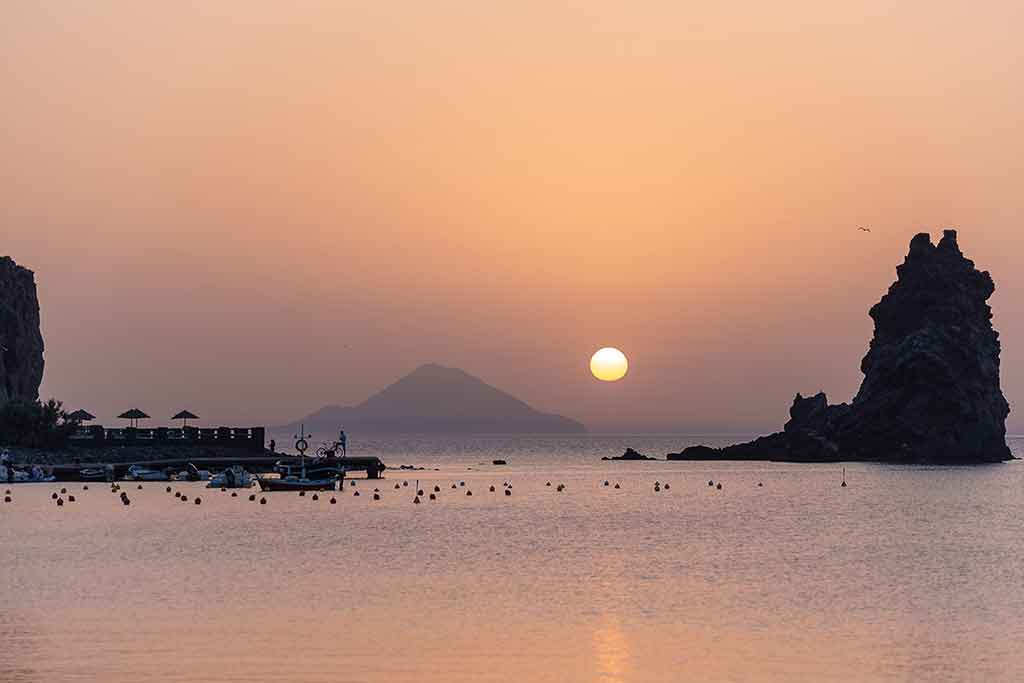
Spectacular sunset on the island of Filicudi, the Aeolian archipelago
Filicudi is part of the archipelago of the Aeolian Islands, located off Sicily. It depends on the municipality of Lipari and is part of the province of Messina. It has two characteristic ports, which are also the two main inhabited centers: Filicudi Porto and Pecorini a Mare, and has a total of 200 inhabitants.
The island, whose name comes from Greek and means 'rich in ferns', is in size the fifth of the archipelago and the westernmost one after & lt; Strong>Alicudi. In summer, the population of the island, thanks to the turnout of tourists reaches around 3,000 people.
Filicudi's greatest attraction is the sea, clear and crystal clear. In addition to swimming, sunbathing and boating, you can go diving. You can also walk in the mountains, paragliding and visit the remains of ancient homes and sites.
The Faraglione la Canna is what remains today of the result of the last eruption of the volcanoes of Filicudi, which occurred about 40,000 years ago. The rock has the shape of a 71-meter high tower, on top of which, mountaineers, have placed a statue of the Madonna. It is inhabited by protected species of hawks and lizards. Dipping into the seabed around the Reed it is possible to meet groups of fish and also lobsters.
The Rock of Fortune is one of the most fascinating attractions of Filicudi. Its particular shape, similar to a basin, causes a sort of natural pool to form inside it. The crystal clear water allows you to fully enjoy the pleasure of diving, up to a maximum of -23 meters, and to admire and photograph the natural caves and the beautiful local fauna and flora.
In the locality called Capo Graziano, the remains of a prehistoric settlement dating back to 3,000 BC have recently been discovered. Twenty-five oval-shaped huts, inside which remains of ceramics were also found. Near the village, which was inhabited until 1430 BC, a sacrificial macaw was also found.
On the ten square kilometers of Filicudi territory there are seven volcanoes, all extinguished, the main one is Fossa Felci, 773 meters high. It is possible to reach it on foot by walking through the old mule tracks and crossing abandoned villages. To enjoy the beauty of the Sicilian sea from above is definitely worth a little effort.
Like the Faraglione la Canna, Scoglio Gianfante also has a volcanic origin. The name is due to its resemblance to the elephant, which in Sicilian dialect is called precisely 'jafant'. The depth of water around the basalt formation attracts many divers.
This guide has been translated automatically through a third party service. Visititaly offers these automatic translations to help site visitors, however the automatic translations may contain inaccuracies, errors or inaccuracies. You can contact us to report inaccuracies or errors and we will check the translation.